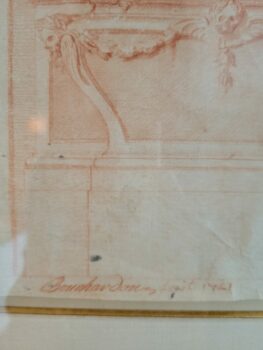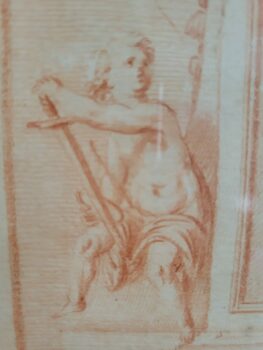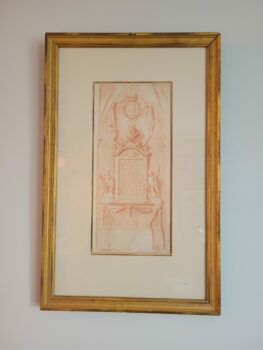This art appraisal report offers an in-depth and impartial assessment of the artwork in question, grounded in the appraiser’s expertise and familiarity with the art market. All the information and data analyzed in this report is sourced solely from the client.
Having a clear understanding of the value of your artwork is crucial in making informed decisions about its future. This report provides a precise estimate of the value of each piece, using US dollars as the base currency. It is not intended to encourage the sale of the artwork, but rather to provide valuable information on how to proceed should the client decide to do so in the future.
Detailed description of the artwork, including its medium, dimensions, and condition.
Checking Originality: Identification with Artificial Intelligence Test
In the quest to identify a match, Image Search employs advanced AI techniques to scour databases of images in order to find visually similar images. This is achieved through the use of various algorithms such as pattern recognition and machine learning. While some results may be considered as “matches” due to a clear similarity, other results may be inconclusive as they rely more on chance rather than any specific similarities. To conduct this test, a front-facing image was used as a reference to search for similar images on the internet.
The results of the automatic recognition are not conclusive. If a match is found, it will be shown below:
What specific information can we obtain from this test?
Our findings demonstrate this is a unique work of art; the comparison images in our gallery could not be matched with it. Even though there is always some uncertainty, we’ve found that this method gives accurate results 90% of the time, so it’s a good way to start figuring out if something is real. To completely identify the artwork, I continue to the next test.
Age estimation
In order to determine the age of the painting in question, An Original Engraving by Listed Artist Edme Bouchardon (French, Chaumont 1698–1762 Paris), one can inspect a variety of characteristics. For instance, the frame construction, the color palette used, and other indicators all offer clues as to the age of the painting. The frame construction can often indicate the time period in which the painting was created, as the style of frames changed over time. Similarly, the color palette used can also offer insight into the painting's age, as different color combinations were popular in different eras. Moreover, any other characteristics such as the subject matter, composition, and brushwork can also help in determining the age of the painting. All in all, inspecting various characteristics can provide useful evidence in determining the age of the painting in question.
Based on this information and the pictures provided, I can estimate this artwork was made circa 18thC. It is difficult to date with pics, since it was clearly reframed in a later period (the frame is circa 20thC). However, I find the paper used and colors are from circa 18thC and compatible with an original drawing of that era.
Condition of the artwork
This painting by Edme Bouchardon is in good to excellent condition. There is no need for restoration, and no appreciable damages. If any damage is present, it is minimal. This painting is a fine example of the artist's work, and will remain in its current condition for years to come.
Artist’s name, biographical information, artwork’s provenance (history of ownership) and exhibition history.
I study and research the signature of artwork to see if it matches any known signatures. At this step, I also inspect the painting’s front and back pictures, to find an artist’s name or other identifying features like stickers that may help me identify who has made this work. If there is any, provenance is also seen as an important variable because it helps figure out who the artist is.

A close picture of the signature is included in this report.
I can read the signature as:
BOUCHARDON
At this point, I can use the signature and try to find the artist’s name in a database of known-listed artists. Basically, it is a database with information about the names, surnames, origins, and biographies of the most well-known artists.
I found that the artist who painted this artwork is a listed artist EDME BOUCHARDON (CHAUMONT 1689-1762 PARIS). Edme Bouchardon was a French sculptor born in Chaumont-en-Bassigny in 1689. He was the son of a sculptor and architect, Jean-Baptiste Bouchardon, and learned sculpture first in the studio of his father, and then with Guillaume Coustou. During his time in Rome, he specialized in busts of distinguished patrons, including Pope Benedict XIII. Upon his return to France, he worked in the royal art workshops at the Palace of Versailles, creating statues for the Gardens of Versailles, including the statue of Proteus in the Basin of Neptune. He also sculpted “Cupid Fashioning a Bow out of the Club of Hercules” which is now in the Louvre. His last completed major work was the Fontaine des Quatre-Saisons in Paris, commissioned in 1739 and completed in 1745. He was also commissioned to make an equestrian statue of Louis XV for the Place de la Concorde, but died before it was finished. It was completed by Jean-Baptiste Pigalle, but was destroyed during the French Revolution.
Detailed analysis of the artwork’s style, subject matter, and significance within the artist’s oeuvre and the broader art world.
I can check if the style and type of painting match those of the artist referenced.
The painting by Edme Bouchardon is a classic example of the artist's distinct style. His work is characterized by its meticulous attention to detail and its use of light, shadow, and color. The composition of the painting is balanced and harmonious, with a focus on the figure and its environment. The artist's brushstrokes are precise and the lines are delicate, giving the painting a sense of movement and energy. Overall, Bouchardon's painting is a beautiful representation of his unique and powerful artistic style.
Comparable sales information, including prices realized at recent auctions or private sales of similar works by the artist or in the same medium.
In order to provide an up-to-date estimate of the fair market value for the Original Engraving by Listed Artist Edme Bouchardon (French, Chaumont 1698–1762 Paris), I utilized the data collected, including auction prices and other relevant market information. This is crucial as it can be used in various contexts such as insurance, estate planning, and art market analysis. It also offers a valuable insight into how the valuation of the artwork may have changed due to environmental or economic factors specific to Edme Bouchardon's pieces.
The auction prices were a significant factor in determining the current market value of the artwork, as they are based on actual transactions between buyers and sellers in the art market. As such, they are a strong indicator of the expected value of the piece in the near future.
By analyzing auction results from the last 6 months, I was able to accurately determine the current fair market value of the artwork. This approach provides a comprehensive view of how the value has changed over time and gives insight into any potential areas of appreciation or depreciation in its price. Additionally, it allows me to adjust my valuation as new auction prices become available.
Conclusion
Investing in art can be a great idea for many reasons. Art can provide a unique and flexible way of diversifying one's portfolio, as it can appreciate in value over time, often faster than other investments. Furthermore, a piece of artwork can become more valuable with age, as the artist gains recognition and demand for his or her work increases. Additionally, art can provide a unique way to enjoy the returns of one's investment, as it can be displayed in one's home, or other places. Lastly, investing in art can also be an emotional experience, as it helps to create an atmosphere and bring culture into one's living space. Buying an original engraving by a listed artist, such as Edme Bouchardon, can be an excellent investment, as it is likely to appreciate in value over time and have artistic merit.
This painting can be considered valuable by the art market because it is an original engraving by a listed artist, Edme Bouchardon. Bouchardon was a renowned French artist who worked in Chaumont and Paris in the late 1700s and early 1800s. He is highly regarded for his engravings and his works are highly sought after by collectors. Furthermore, original engravings by Bouchardon are extremely rare and can command high prices due to their scarcity. Thus, this painting is likely to be considered valuable by the art market due to its rarity and the reputation of the artist.
Final Appraisal Value ($)
5,000-6,000$
Appraisal Report made by:
Andrés Gómez
BSc, MSc, Expert Art Appraiser
10+ years of experience in Online Art Appraisals
100k+ Customers Served
Antique Store Owner
You can check my portofolio of past appraisals here:
https://www.appraisily.com/andres-portofolio/

Relevant photographs or supporting documentation, such as condition reports or expert opinions
A detailed summary of the appraisal process and the appraiser’s qualifications.
Mark-to-market art appraisal is a vital method for determining the current value of a piece of artwork. This form of valuation requires an appraiser to consider various factors, such as market conditions, the condition and age of the artwork, and the artist’s reputation. By taking all these elements into account, a mark-to-market art appraisal delivers an accurate assessment of a piece of artwork’s current market value.
The artist’s reputation, as determined by their track record in gallery and museum shows, awards, and other accomplishments, is also considered in mark-to-market art appraisal. Appraisers use this information to determine if the value of a piece is likely to increase or decrease over time. Additionally, they will inspect the condition of the artwork and note any signs of wear or damage that might affect its future resale value.
When performing mark-to-market art appraisals, appraisers also consider market conditions by researching current art market trends and comparable works that have recently sold. This information is used to provide an estimate of a piece’s worth at that point in time. By considering all of these factors, mark-to-market art appraisal is able to give a reliable indication of the current value of a work. This kind of valuation can also ensure fair prices are paid and received when buying or selling art.
In summary, mark-to-market art appraisal is a crucial tool for determining the true value of a piece of artwork, enabling buyers, sellers, and appraisers to make informed decisions regarding its worth. It takes into account multiple aspects to provide an accurate assessment of the current market value of a work. This information can be used to ensure that buyers and sellers are getting a fair price for the artwork, and that the appraiser’s valuation is up-to-date and reflective of current market conditions.
In the case of insurance replacement appraisals, mark-to-market art appraisals can also be used to accurately estimate the cost of replacing a lost or damaged artwork. The current value, as determined by the appraisal, is then used to determine the amount that the insurance company will pay back to the policyholder. This way, policyholders can rest assured that they will receive an appropriate sum for any artwork that needs to be replaced due to accidental damage or theft. Additionally, this kind of valuation helps insurers ensure they are not being overcharged when artwork needs to be replaced as part of a claim settlement.
The appraisal process is a thorough evaluation of the item or items in question. It involves researching and analyzing the information provided by the requester in order to provide an accurate estimate of its value. The appraiser takes into account factors such as condition, rarity, demand, and market prices. Photographs and detailed descriptions are especially important when providing an appraisal, since they help the appraiser identify any potential flaws or defects that could affect the item’s worth. By using all the resources that are available, an evaluation can be done quickly, efficiently, and with a high level of accuracy.
A statement of the appraiser’s liability and any potential conflicts of interest.
A qualified art appraisal, also known as a formal written evaluation, is a professional assessment of the monetary value of a piece of art by an individual who has specialized knowledge, expertise, and training in the field of art appraisal. This person must meet certain educational and professional requirements, including experience in researching and evaluating art, as well as knowledge of the art market and current market trends. The purpose of a qualified art appraisal is to provide an objective and unbiased opinion of the value of a piece of art for various purposes, including insurance claims, tax planning, estate planning, or to help determine a fair price for a sale or purchase.
We are committed to providing our clients with the most accurate and unbiased appraisal reports. To ensure impartiality, we adopt a flat rate, fixed fee structure for all appraisals, instead of a percentage-based fee. This eliminates any potential conflicts of interest between the art appraiser and the final report value. Our appraisal reports are in compliance with the Appraisal Foundation’s USPAP (Uniform Standards of Professional Appraisal Practice) standards and guidelines, which are widely accepted as the ethical and performance standards for appraisers. This guarantees that our reports are of high quality and legally defensible.
How to sell this artwork.
We have a structured guide to help you sell your artwork, you can find it here.










